2010 European Brass Band Championships - Own Choice selections
25-Apr-20104BR has a look at the selections made by the bands to showcase their abilities to try and become European Champions.
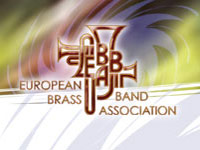 As was the case in 2009, all the competing bands have made different choices to showcase their talents in the own choice discipline of the contest on Saturday.
As was the case in 2009, all the competing bands have made different choices to showcase their talents in the own choice discipline of the contest on Saturday.
As is the current fashion, two bands will give world premieres (‘Red Priest’ and ‘A Tale As Yet Untold’), whilst one will give a contest premiere ('Earthrise’).
The remaining seven will reprise works that have been played over 50 times at the contest since 1978.
Two works previously used as the main test piece at the contest are being aired this year:
‘From Ancient Times’ (2009) and ‘St Magnus’ (2004), whilst four (‘Harmony Music’, ‘Journey to the Centre of the Earth’, ‘Vienna Nights’ and ‘Concerto Grosso’) were played in 2009, and one (‘Music of the Spheres’) was last played in 2008.
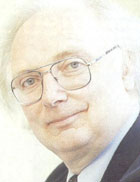 Red Priest
Red Priest
Philip Wilby
During his lifetime, Antonio Vivaldi was known as ‘Il Pretto Rosso’, the Red Priest, thanks to his youthful ordination and his flaming red hair.
The son of a violinist at San Marco in Venice, Vivaldi’s musical pedigree was impeccable, and an excellent start to his career was coupled with astounding energy and productivity.
His vast output of ‘Concerti Grossi’, using soloists in groups, has inspired the present composition, and performers may choose appropriate stage positions for the various groupings of cornets and trombones, spaced around the performance area.
The score quotes freely from some of Vivaldi’s most popular compositions, including ‘Winter’ from the Four Seasons, the Motet ‘Nisi Dominus’, the famous ‘Gloria’, and the fugue from the D minor concerto grosso found in ‘L’Estro Armonico’.
However, it is the musical spirit of Vivaldi, a close contemporary of both Handel and Cassanova, that inspires this music, which should be played with a mixture of accuracy and abandoned virtuosity.
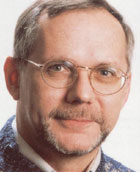 A Tale As Yet Untold
A Tale As Yet Untold
Philip Sparke
’A Tale as Yet Untold’ was specially commissioned for the European Brass Band Championships in Linz, Austria, 2010.
The theme of the work, which is set in three movements, is one that recurs again and again throughout the music of Philip Sparke – specifically a series of works for concert band: the Trombone Concerto, Deserts, When the Spirit Soars and Spirit of the Sequoia – which take as their subject the power of the human spirit to overcome adversity and how the beauty of music can help in this respect.
The ‘tale’ of the title is an autobiographical one which the composer feels need not be divulged to explain the programme of the music, which deals with a much more general human condition.
The first movement opens with a nervous repetitive figure in the cornets, under which an impassioned theme develops.
This is cut short by a closely related faster section which comprises two alternating moods: an aggressive ‘toccata’ interspersed by a yearning 6/8 melody.
The second movement is the heart of the work and symbolises the ability of the human soul to overcome the ‘Sturm und Drang’ of the first movement with an indomitable sense of optimism.
The third movement tries to negate this feeling of peace but ends triumphantly in a salute to the power of the human spirit.
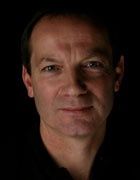 Earthrise
Earthrise
Nigel Clarke
`Earthrise´ is the name of one of the most iconic photographs in history.
The original NASA image named AS8-14-2383 was one of a series of photographs taken by William Anders and the Apollo 8 crew on 24 December 1968 during the first manned mission to the Moon.
Astronaut Michael Collins, who was later to take part in the Apollo 11 mission that first landed on Moon and who was working on the ground as capsule communicator for the Apollo 8 team, called their mission “more awe-inspiring than landing on the Moon”.
`Earthrise´ is my second work dealing with the subject of space travel; the first was a work called `Gagarin’ written for wind orchestra.
`Earthrise´ is written in one continuous movement but divided in to three sections fast-slow-fast. I have tried to capture the excitement and expectation that the Apollo 8 mission brought to the world.
This is reflected in the extreme virtuosic demands put upon the performers. I have endeavoured in my opening bars to reflect as a musical portrait the description given by the author and aviator Anne Morrow Lindbergh when she witnessed the launch on 21 December 1968 in Florida.
“Slowly, as in a dream, slowly it seemed to hang suspended on a cloud of fire and smoke´ Then followed the noise `a shattering roar of explosions, a trip-hammer over one’s head, under one’s feet, through one’s body. The Earth shakes, cars rattle, vibrations beat in the chest. A roll of thunder prolonged, prolonged, prolonged.”
After the opening section I have emulated the speed and power of Apollo 8’s Saturn V rocket, using the Earth’s gravitational force to catapult it towards the Moon.
Preceding the central section of `Earthrise´ is a large scale multilayered cadenza featuring most instruments in the band in free time floating bars and portraying the astronauts floating on the dark side of the Moon.
The cadenza acts as a prelude to the kernel of the work, the moment when Earth comes into view as the only coloured object in our monochrome universe. The final section of the work paints a picture of Apollo 8 hurtling back to Earth at an incredible 25,000 miles per hour on its quarter of a million mile journey, hitting Earth’s narrow atmospheric corridor and finally splashing down in the Pacific.
Nigel Clarke
The various moods of `Earthrise´ are reflected and captured in a specially commissioned poem of the same name by Martin Westlake to accompany this score.
EARTHRISE
By Martin Westlake
On 21 December 1968,
In a daring escape,
Three men with a pocket calculator
Rode a roaring tower of 5.6 million parts
Into Floridean skies
And soared into expectant orbit.
While they gazed back at a world fast changing
From landscape to planet,
Gravity drove them,
Pebbles flung from Earth’s sling,
Across the vast astrolabe
Towards their lunar destination.
Rushing slowly through utter loneliness,
They floated in their silvery dust speck,
Gliding and sliding along an invisible plane
Towards the moon’s bright disk,
And there they hid in the black nothingness
Of the dark side.
Celestial tourists drifting back into light,
Their cameraed necks craning through fogged up windows,
They caught a target of opportunity,
A twin-filmed grain of rock floating with all its peoples,
A colourful, half-lit pendulum,
Swinging out from the moon’s pockmarked cheek.
Borman, Anders and Lovell – the three exceptions,
Gazed at the rest of humanity in its distant invisibility,
Then fell a quarter of a million miles,
Bouncing on the atmosphere before streaking earthward,
An orange slash in a black piece of velvet,
Parachuting down to the Pacific’s waves.
Man had been to the moon, but he had seen the earth,
Seen what gods saw, seen what gods made;
He had seen the earth rise,
Seen frontiers and races disappear.
And, just for a while, it seemed
That man would think as gods thought.
 Harmony Music
Harmony Music
Philip Sparke
Harmony Music was commissioned by Boosey and Hawkes Band Festivals Ltd for the 1987 National Brass Band Championships of Great Britain, which was won by the Desford Colliery Dowty Band conducted by James Watson.
The title is both a play on the German “Harmoniemusik” with all its associations with bands in general as well as a reference to the overall tonal harmonic language of the piece.
The piece opens quietly with a long unison crescendo, interrupted by upward rushes from the basses and trombones, which introduce a fanfare like passage from the cornets. A sonorous chorale follows which builds from the lower band to a tutti climax.
There is a brief hint of faster music but before this is an immensely difficult euphonium cadenza which reaches both extremes of the instruments range.
The Molto Vivace is fast and furious as well as Francophile in style before the music subsides to a haunting homage to the composer Maurice Ravel which incorporates two accompanied cadenzas for cornet and horn. The opening returns before a shuddering climax that is tumultuous.
The soprano and trombones try in vain to stop the chaos before a Presto Coda ends the work. Even two decades years after it was written it is a piece that requires immense amounts of skill and talent from both players and MD to make come off, and remains one of the composers most accessible and popular compositions.
Used at European:
1988: De Waldsang
1990: Black Dyke*
1991: De Waldsang
1992: BTM
1993: Cory
1994: Willebroek
1996: Manger Musikklag; Burgermusik Luzerne
1999: Yorkshire Building Society*
2002: Treize Etoile
2003: Manger Musikklag
2009: Lyngby Taarbaek
*Black Dyke and Yorkshire Building Society won the own choice section of the contest
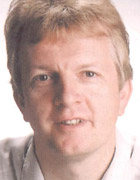 From Ancient Times
From Ancient Times
Jan van Der Roost
This really is an intriguing and highly enjoyable work for brass.
On the face of it, Jan van Der Roost is a musical archaeologist, a man with more than just a passing interest in the dusty archives of history. In fact, he seems to revel in the past, although unlike Indiana Jones or Howard Carter, he is no grave robber.
Inspiration comes from myth, legend and antiquity – from his Arthurian trilogy that included the works, ‘Avalon’, ‘Stonehenge’ and ‘Albion’ to his latest sweeping, historical epic, ‘From Ancient Times’. His major works are invariably lyrical, at times darkly hued in timbre and outlook, but full of detail, rich textures and a mordantly black wit.
He asks a great deal of performers and conductors alike - inviting interpretation and understanding from MDs and soloists in particular, but born with a respect to their musicality. Technically he works take some playing, but they are constructed with a degree of expertise and understanding of limits and possibilities; virtuosity not bland mechanical brilliance finds its reward in performances of his works.
’From Ancient Times’ is inspired by the Franco-Flemish School of the Renaissance – from the great artists such as Rubens, Van Dijck, Breughel and Van Eyck, to the composers, many of whom have possibly been forgotten in the passing of time.
Men such as Desprez, Lassus, Willaert, Ockeghem, Obrecht, Isaac, Dufay and de Monte, may well sound like members of the 1982 Belgium World Cup squad, but are in fact the great names of the ‘golden age’ of Low Country composition, who Van der Roost believes are the originators of Western music.
These are the men who inspire the work to be used as the European test piece this year – the men whose ciphers, (although there are no direct references – Van der Roost describes them as ‘winks’) permeate from start to finish.
A more liberal feeling of historical context is also apparent in the ‘homage’ (as the composers states) to such figures as Adolfe Sax and the Gregorian reminiscences that bring a distinct touch of the medieval to the opening sections of the composition.
There is however no artifice to the end product.
The composer’s rich stream of musical thinking develops the oblique opening monastic statements with a very modern twist. Those who have heard ‘Albion’ will be aware of his technique of ‘intertwining’ various individual musical lines in a form of dislocated canon, an effect that starts early in the work with the muted euphonium and baritone, who are to be stationed ‘back stage’.
The subsequent musical development includes subtle changes in style complimented by less subtle interjections (especially from the trombones, who have a great deal of work to do from start to finish). Their robust entries seem almost comedic at first, but as the work progresses they provide a foundation of nobility that becomes ever more striking.
The composer’s dark wit is borne with almost Dorothy Parker like sharpness: a medieval dance called an Estampie, with it play on the acronym’s of EBBA and VLAMO (Flemish Amateur Music Organisation) is brought to life with a twist of the intellectual mind that only those who can do the Times Crossword in 10 minutes find side splitting, whilst the rest of us find difficult to work out.
Although played in one continuous movement, there are very distinct sections to ‘From Ancient Times’ that are clearly indicated not just in the score.
For those with a desire to see players tested to the full (and perhaps beyond), the series of senza misura cadenzas will provide the most obvious focal point.
Underpinned by a soft free flowing percussion foundation (who have a great deal to do throughout), the flugel starts a series of complex showpiece offerings that at times are played singularly, at others in tandem with compatriots. Each requires a very high degree of virtuosity (again – not just mechanical brilliance – expression is deliberately called for), with fearsome contributions from the baritone and solo horn in particular.
If overcome with aplomb a conductor and his band can perhaps seal their performance in the lovely following section – a homage to Adolphe Sax, that has an almost ethereal beauty.
This develops from its simplistic opening source almost as quickly as Sax developed his range of brass instruments. Soon we are entering high speed technical work that encompasses huge variances in technique before a return to a majestic noble finish (‘like an organ’ states the composer) and an almost Sparke like romp to the end, topped by a soprano screaming out a top D (with pause)!
It also rounds off a hugely enjoyable original work that extends the composer’s obvious desire for archaeological exploration with a very individual interpretation of his findings.
Let’s hope he continues to keep digging…
Iwan Fox
Used at European:
2009: Set work
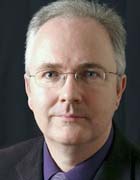 Journey to the Centre of the Earth
Journey to the Centre of the Earth
Peter Graham
The French novelist Jules Verne (1828 - 1905) created a unique blend of science and adventure in his series of novels known as "Voyages Extraordinaires".
Written in 1864, Journey to the Centre of the Earth is on the surface an adventure story but as the commentator Diana Mitchell has observed on a deeper level can be seen as "man's journey of himself, always probing deeper for what lies at the centre".
The novel takes the form of a sequence of diary entries by Axel, nephew of Professor Otto Lidenbrock.
The pair follow coded instructions in an old document guiding them to Iceland where, together with their guide Hans, they enter the open crater of an extinct volcano Snaefells and pursue a trail to the centre of the earth.
There follows "hair-breadth escapes and ventures perilous" as the intrepid explorers encounter a vast interior world.
This music presents scenes from the novel in a rough chronological order. The work opens on the dark and brooding Summit of Snaefells and follows the adventurers as they descent into the bowels of the earth.
En- route they encounter the Wonders of the Terrestrial Depths (an electrically illuminated sky), a dream sequence during which Axel witnesses a Battle of Antediluvian creatures before the final Ascent and Homecoming.
The key scene of the book (and the music) reflects on Axel's despair as he becomes separated from the his companions and is Lost in the Labyrinth. His subsequent rescue is due to an acoustic phenomenon whereby he hears the voices of his friends in The Whispering Gallery.
Journey to the Centre of the Earth is dedicated to Ryan and Megan, who love the story!
Peter Graham
Cheshire
March 2005
Used at European:
2005: Black Dyke*
2006: Willebroek; Newtongrange
2007: Lyngby Taarbaek
2009: Brass Band Treize Etoiles
*Black Dyke won the own choice section of the contest
 Vienna Nights
Vienna Nights
Philip Wilby
Philip Wilby's masterful fantasy on Mozart's Piano Sonata in A, K331 is arguably his finest work for brass band and will become an instant classic of the genre.
No other composer for brass could so successfully bring together two such diverse strands of compositional matter and architecture into one coherent symbiotic relationship like he has done here.
It is a breathtaking achievement of subtle mastery for Wilby has achieved the musical equivalent of turning base metal into pure gold. This is brass band compositional alchemy, and the result is quite startling.
The key is perhaps found in the subtitle to ‘Vienna Nights' itself. Wilby calls it a ‘fantasy' which allows him the scope to develop his own thoughts and themes, structures and ideas without ever losing the purity of the original thematic material.
It is not an arrangement, realization, transcription of straight copy and paste job of the original with added on bits. If it were, it would have been a disaster. What we get therefore is a classically structured piece in Sonata form where the germ of the original musical thought is developed without ever changing its historical DNA.
The Mozart music that forms the basis of the work is untouched and allowed to stand alone in all its glory, however brilliantly Wilby surrounds it with his kaleidoscopic array of inspired personal ideas.
It is therefore a piece that delineates the dichotomies between the two composers to the full - the almost simplistic beauty of Sonata and the joie-de-vivre of the Turkish Rondo allied to the intervening more muscular and complex layers of Wilby and his own homage to the 12 tone harmonics of Schoenberg. The result as we have said, is quite something indeed.
The piece, played in one continuous movement is broken into the sonata form: The first entitled ‘Freud's Dreams' is itself homage to the great thinker and father of psychoanalysis.
This short introductory section leads to part 2 – ‘Variations' which itself is broken into a series of continuous variations on the Mozart theme from the Piano Sonata.
The nine mini variations cover just about every aspect of musical development you can think of, but always at their core is a pure circulatory bloodline, like a series of veins and arteries connecting every musical strand to the Mozart heart.
The third section is marked ‘Scena and Notturno' and is the most operatic in style and content before that itself sets the scene for the finale.
This is the romp of the ‘Finale Alla Turca' brought to life with an injection of pace that would leave the sprinter Marion Jones in her tracks.
This is still very much Mozart, but Mozart on a diet of Red Bull chasers - it's wickedly joyful, devilishly difficult and quite amazing to listen too (and we suspect to play).
Iwan Fox
Used at European:
2007: Stavanger; Scottish Co-op
2008: Grimethorpe Colliery; Brass Band Fribourg
2009: Whitburn
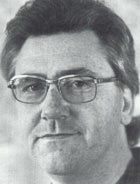 Concerto Grosso: Opus 61A
Concerto Grosso: Opus 61A
Derek Bourgeois
'Concerto Grosso' was written by the composer as far back as 1979, and was originally not a full brass band composition.
The initial piece was in fact written for the Philip Jones Brass Ensemble, a ten-piece made up of four trumpets, 1 French horn, 4 trombones and a tuba and was written especially for Philip Jones' farewell concert.
Bourgeois was at that time the Professional Musical Director of the Sun Life Band in Bristol and when in 1982 the band was asked to perform on the BBC radio programme "Bandstand" the composer took the opportunity of re-scoring the work for full band.
Although an immense "tour de force" the composer believes it to be within the capabilities of most top class Championship bands, although he believes that organisers of the major contests have been reticent to use the piece due to its length – it is 20 minutes long.
The term ‘Concerto Grosso’ is used by the composer in the baroque sense as throughout the work much is made of smaller ensembles featured against a larger accompanying background.
Written in three main parts it is played as a continuous piece and explores in each of its sections material that ranges from the technically brilliant to the sombre, beautiful melodic yet with a real sense of fun and wit.
Each of the major solo players within a band has material that extends their capabilities to the limit whilst the ensemble is tested to the full.
Influences of jazz, blues an even a Charles Ives inspired rumba are heard throughout although the initial motto theme announced at the outset returns time and time again throughout the piece.
It remains today perhaps the most vividly brilliant of brass band compositions.
Iwan Fox
Used at European:
2000: Eikanger Bjorsvik*
2002: Yorkshire Building Society*
2003: Yorkshire Building Society
2005: Buy As You View Cory; Whitburn
2008: Brass Band Buizingen
2009: Brass Band Rijnmond
* Eikanger Bjorsvik and Yorkshire Building Society won the own choice section of the contest.
 Music of the Spheres
Music of the Spheres
Philip Sparke
Music of the Spheres was written late 2003/early 2004 and reflects the composer's fascination with the origins of the universe and deep space in general.
The title comes from a theory, formulated by Pythagoras, that the cosmos was ruled by the same laws he had discovered that govern the ratios of note frequencies of the musical scale. (‘Harmonia' in Ancient Greek, which means scale or tuning rather than harmony – Greek music was monophonic).
He also believed that these ratios corresponded to the distances of the six known planets from the sun and that the planets each produced a musical note which combined to weave a continuous heavenly melody (which, unfortunately, we humans cannot hear). In this work, these six notes form the basis of the sections MUSIC OF THE SPHERES and HARMONIA.
The pieces opens with a horn solo called t = 0, a name given by some scientists to the moment of the Big Bang when time and space were created, and this is followed by a depiction of the BIG BANG itself, as the entire universe bursts out from a single point.
A slower section follows called THE LONELY PLANET which is a meditation on the incredible and unlikely set of circumstances, which led to the creation of the Earth as a planet that can support life, and the constant search for other civilisations elsewhere in the universe.
ASTEROIDS AND SHOOTING STARS depicts both the benign and dangerous objects that are flying through space and which constantly threaten our planet, and the piece ends with THE UNKNOWN, leaving in question whether our continually expanding exploration of the universe will eventually lead to enlightenment or destruction.
Philip Sparke
Used at European:
2004: Yorkshire Building Society*
2005: Stavanger; Brass Band Willebroek; Treize Etoiles
2006: Brass Band Fribourg; Lyngby Taarbaek
2007: Brass Band Willebroek*; Goteborg; Brass Band Aeolus
2008: Stavanger; Kirkintilloch
*YBS and Willebroek won the own choice sections of the contest
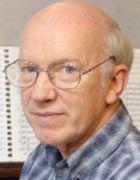 St. Magnus
St. Magnus
Kenneth Downie
This music is a set of variations on the tune known as St Magnus, which is attributed to Jeremiah Clarke. Most people will associate it with Thomas Kelly's hymn, which begins: "The Head that once was crowned with thorns Is crowned with glory now".
The tune is very simple, consisting of just two, four-bar phrases. Neither is there much in the way of rhythmic variety, every note being a crotchet with the exception of two quavers, and the last note in each phrase. Within such a simple structure, however, lies considerable strength.
Theme:
The listener is given the opportunity of hearing it twice, in full, at the beginning, starting with one player but soon taken up by the full ensemble. It returns in the middle of the music and is stated again near the end. This has been done quite deliberately in the hope that there will be an appreciation of what material is being developed, by the listener as well as by those with access to the score, who are able to see the visual connections.
Variation 1:
This takes the rhythm of the last part of the theme and also uses the shape of the opening as a recurring figure. The mood is whimsical and skittish, with short, teasing rhythmic figures tossed around the band, and quick interplay with percussion, at a fast tempo. An energetic flourish finishes this variation before the Andante espress.
Variation 2:
This commences with chords related to the opening of Variation 1. The cantabile on solo cornets establishes a new, lyrical mood and there is scope for expressive playing in a series of short solo passages. The theme works its way unobtrusively into the texture before a reprise of the solo cornet melody and some more lyrical interchanges between Eb tuba, euphonium, flugel horn and cornets. The variation ends serenely with clear references to the last phrase of the theme.
Variation 3: Allegro con moto
The first idea to dominate is clearly linked to the shape of the theme's first phrase. There is a frenetic feel to much of this variation, with considerable energy and instability created by extensive use of cross-rhythms. A thinning-out of the score marks a clear change to development of the start of the second phrase of the theme. This proves to be short-lived however, and the opening material returns leading to a restatement of the theme, "Maestoso" after which a euphonium cadenza links to:
Variation 4:
Here we have some solos for euphonium, cornet, trombone and tuba set against a background of horns and baritones presenting a pensive statement of the theme's opening.
Variation 5:
This commences Allegro, with lively work for cornet and euphonium spreading to the whole band before attention focuses on the beginning of the second phrase of the theme which is initially presented in diminution, then in regular rhythm, then in inversion. An increase in tempo coupled with a decrease in volume, requires dexterity and control, with several metrical challenges thrown in for good measure.
The same fragment of phrase becomes an ostinato, which generates a frenzied climax, punctuated by short, dramatic silence, before the opening figure returns and the music gradually winds down. The tubular bells herald the final return of the theme, in augmentation, marking the start of the:
Finale:
With the running semiquavers of the previous variation sounding in counterpoint. A fast, furious coda speeds the work to a conclusion while references to the opening of the theme are still trying to break into the texture of the music.
Kenneth Downie
Used at European:
2004: Set work
2005: Lyngby Taarbaek















